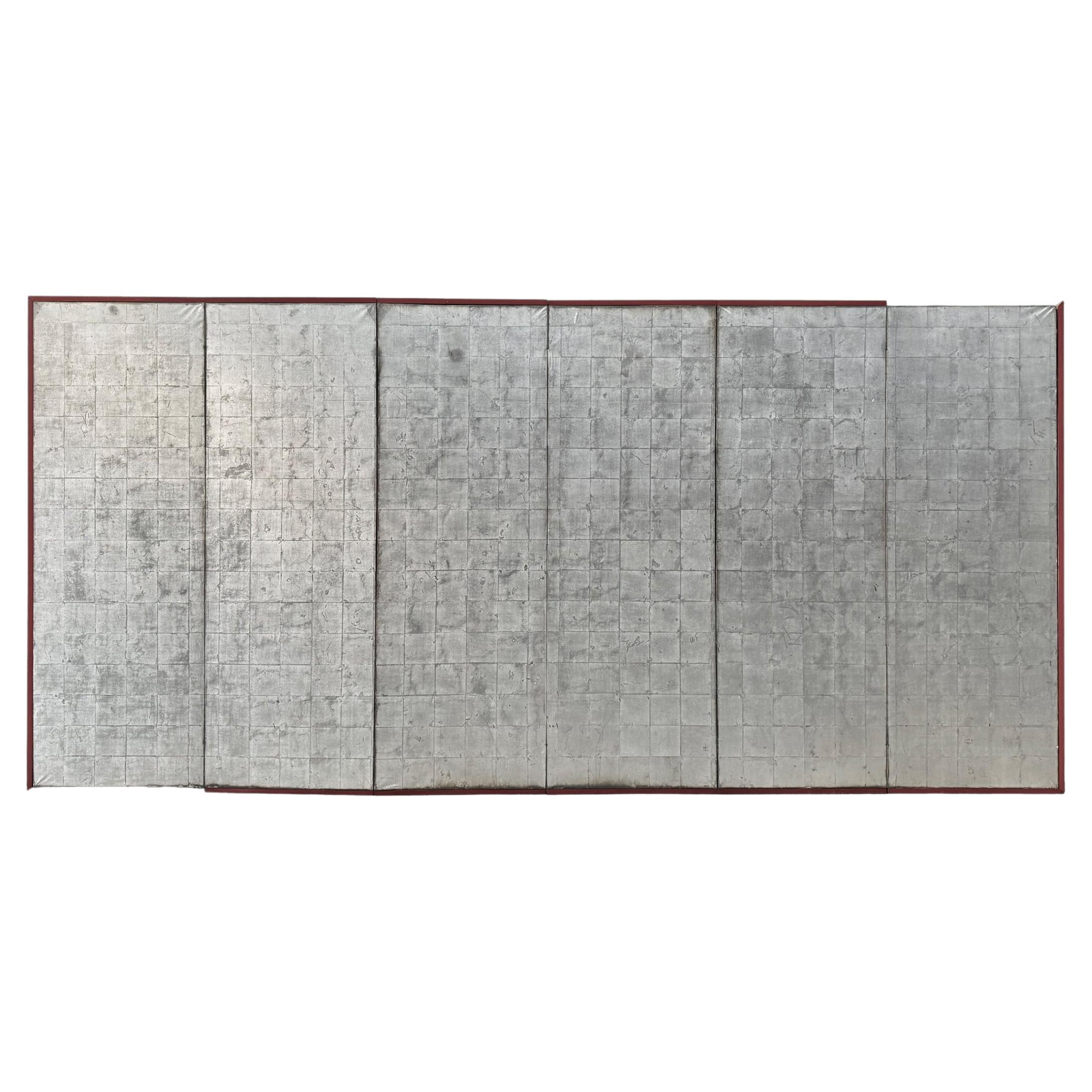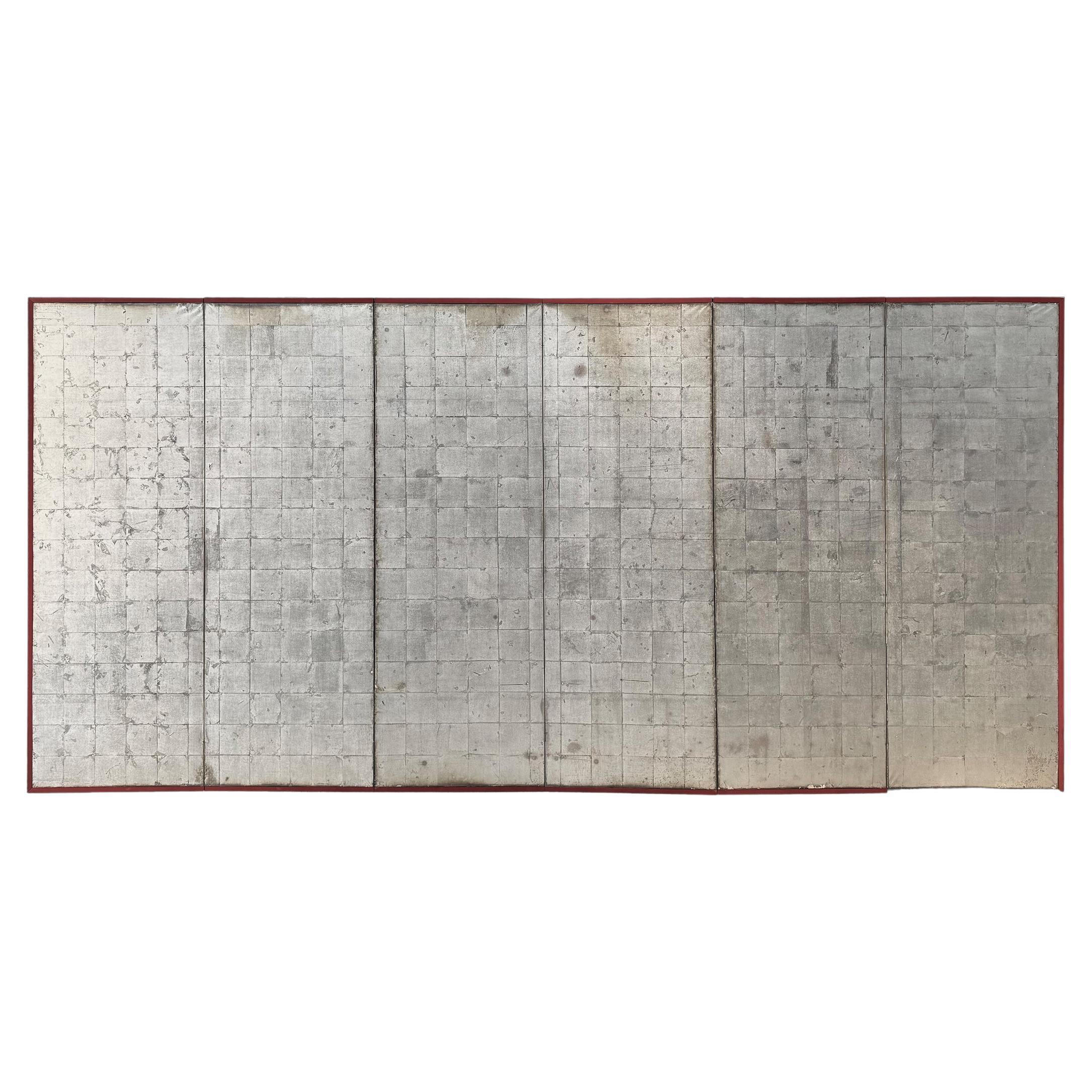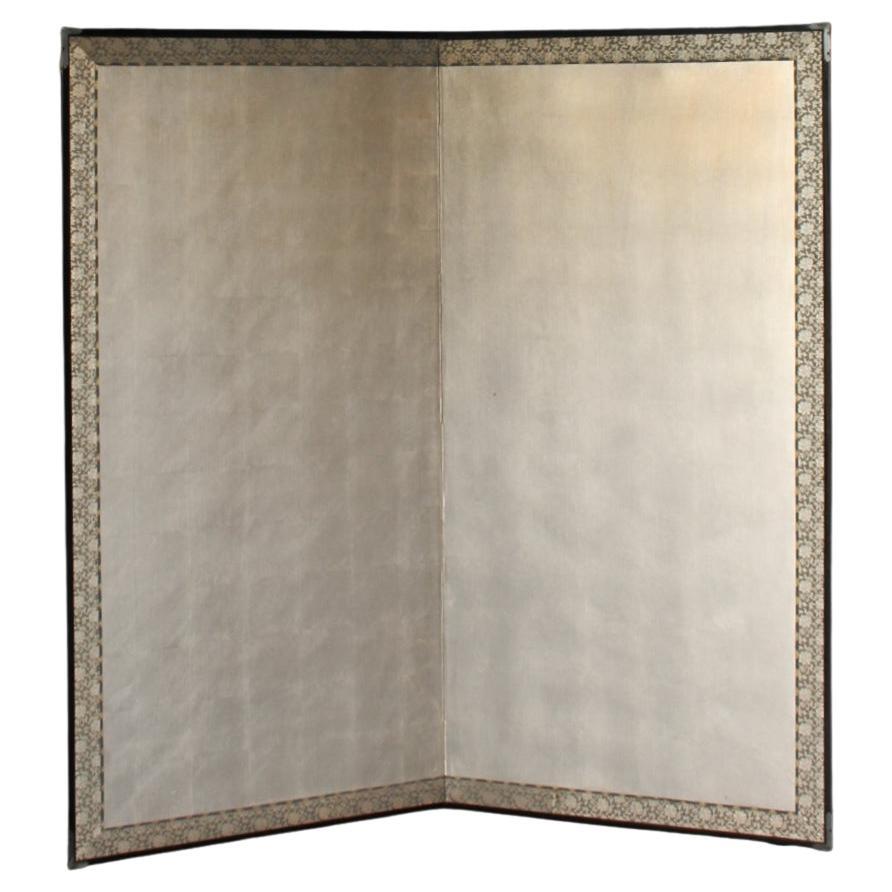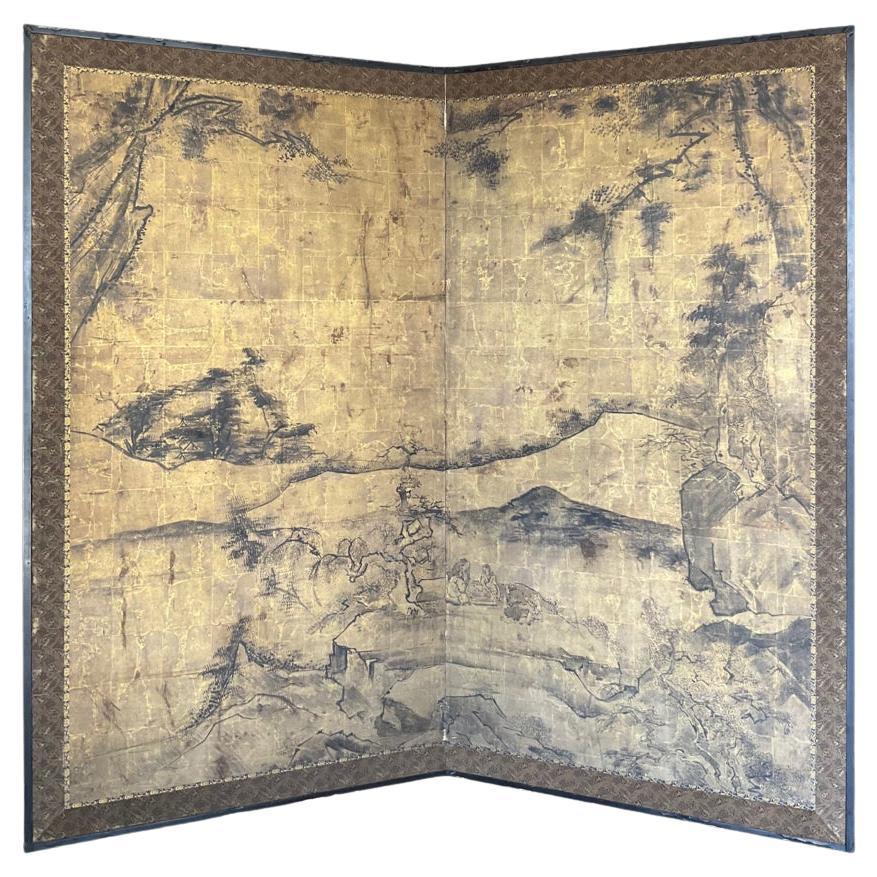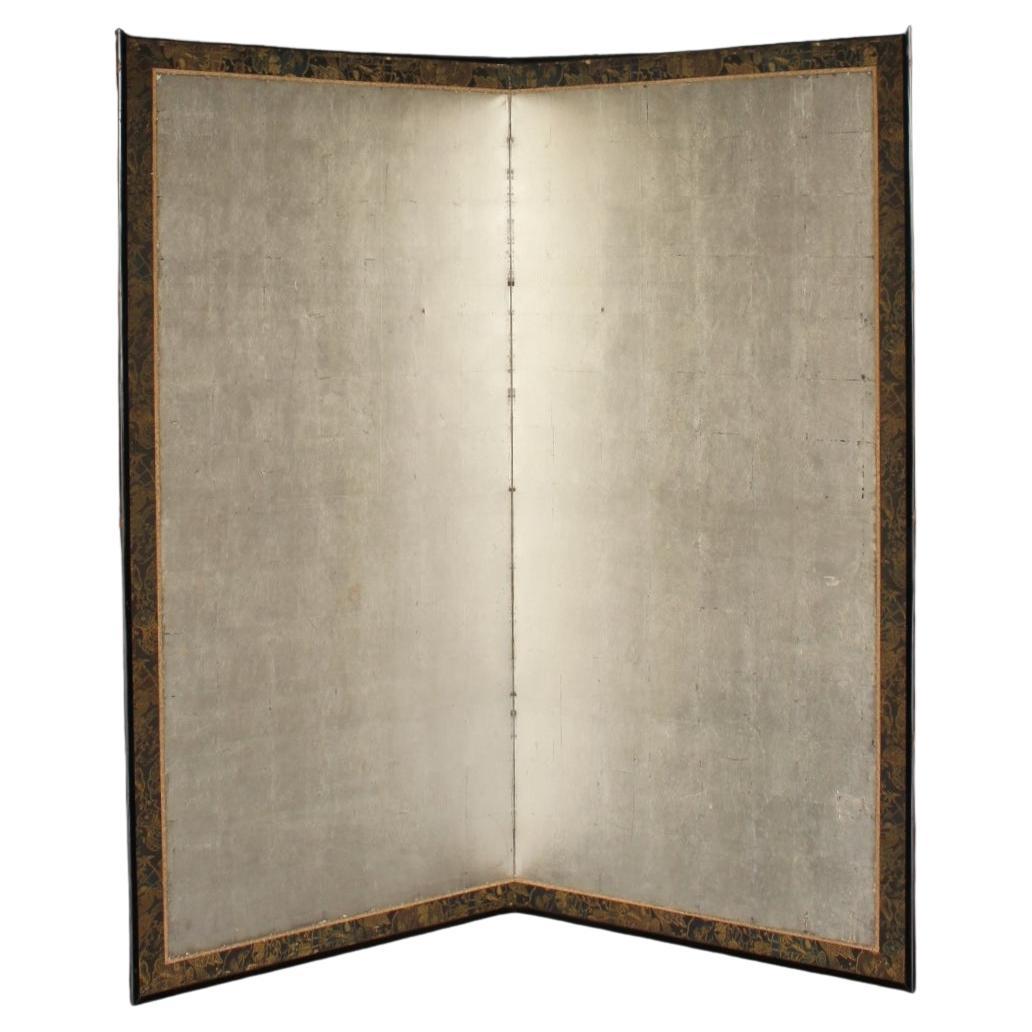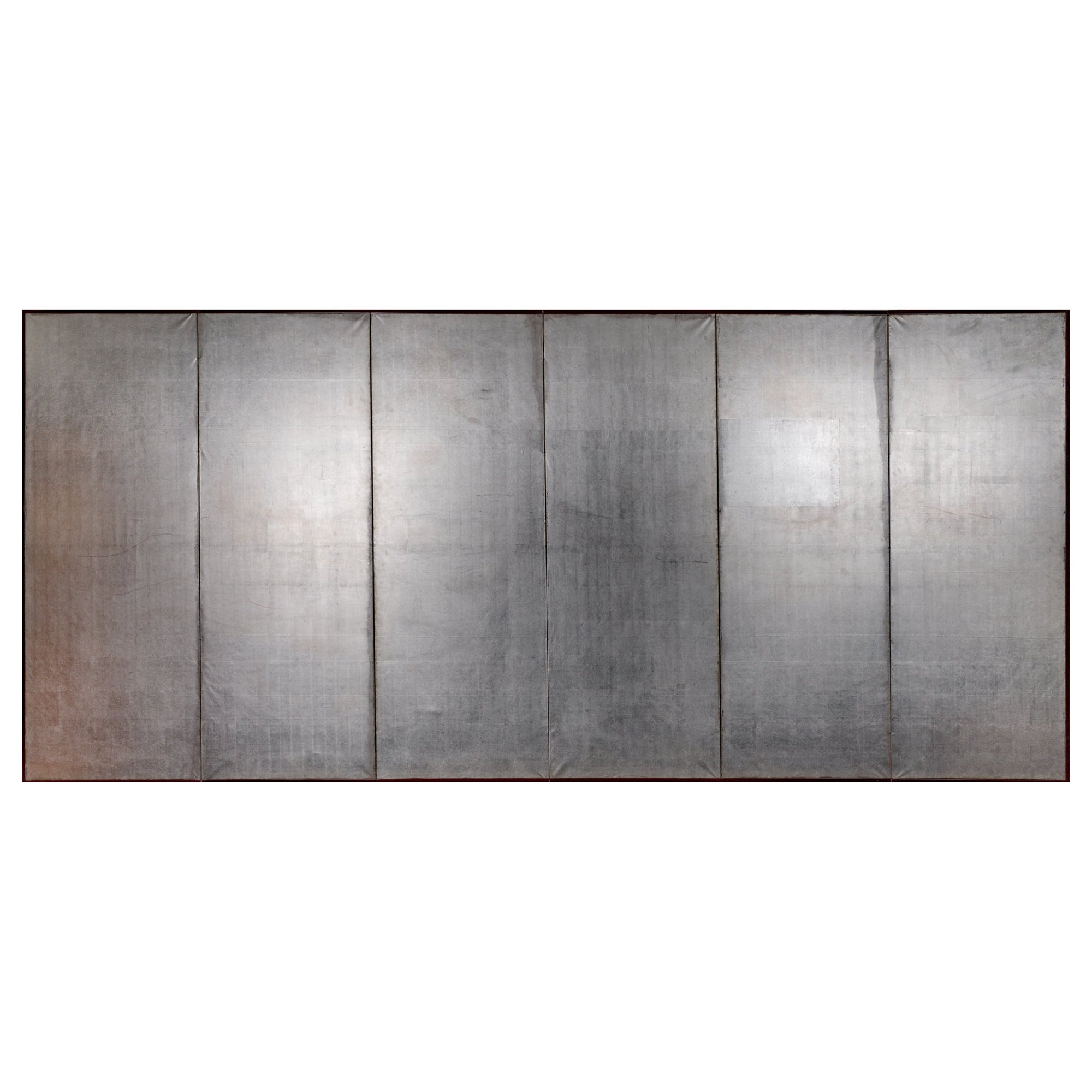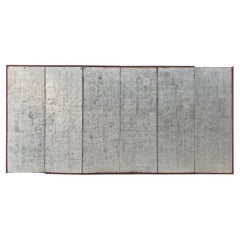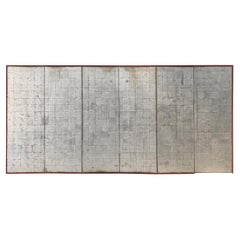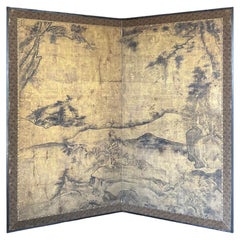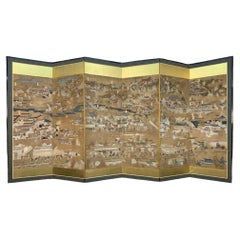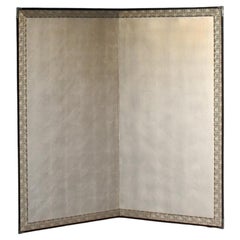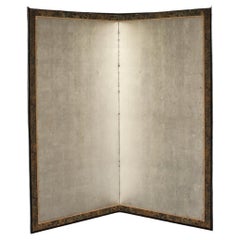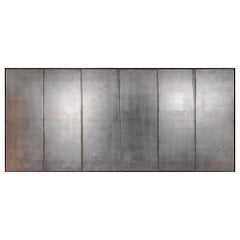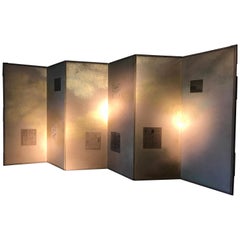Items Similar to Evolving Elegance: An Oxidized Silver Screen from the Meiji Period
Want more images or videos?
Request additional images or videos from the seller
1 of 8
Evolving Elegance: An Oxidized Silver Screen from the Meiji Period
$6,060
£4,570.81
€5,279.33
CA$8,490.48
A$9,440.92
CHF 4,942.49
MX$115,322.65
NOK 62,107.31
SEK 58,424.37
DKK 39,409.80
About the Item
This anodized 6-panel screen captures the serene and minimalistic beauty of a bamboo grove, embodying the aesthetic principles of the Edo period. The screen features subtle and delicate renderings of bamboo stalks, depicted in a restrained ink wash style that emphasizes the natural elegance and vertical rhythm of the bamboo. Each panel harmoniously flows into the next, creating a continuous and calming landscape that invites contemplation. This piece not only serves as a stunning decorative element but also as a reflection of the traditional Japanese appreciation for nature and understated beauty.
- Dimensions:Height: 37.01 in (94 cm)Width: 107.88 in (274 cm)Depth: 0.99 in (2.5 cm)
- Style:Edo (Of the Period)
- Materials and Techniques:
- Place of Origin:
- Period:
- Date of Manufacture:Unknown
- Condition:Minor losses.
- Seller Location:Fukuoka, JP
- Reference Number:1stDibs: LU8121242599072
About the Seller
5.0
Vetted Professional Seller
Every seller passes strict standards for authenticity and reliability
Established in 1998
1stDibs seller since 2023
60 sales on 1stDibs
Typical response time: <1 hour
- ShippingRetrieving quote...Shipping from: Tambon Hang Dong, Thailand
- Return Policy
Authenticity Guarantee
In the unlikely event there’s an issue with an item’s authenticity, contact us within 1 year for a full refund. DetailsMoney-Back Guarantee
If your item is not as described, is damaged in transit, or does not arrive, contact us within 7 days for a full refund. Details24-Hour Cancellation
You have a 24-hour grace period in which to reconsider your purchase, with no questions asked.Vetted Professional Sellers
Our world-class sellers must adhere to strict standards for service and quality, maintaining the integrity of our listings.Price-Match Guarantee
If you find that a seller listed the same item for a lower price elsewhere, we’ll match it.Trusted Global Delivery
Our best-in-class carrier network provides specialized shipping options worldwide, including custom delivery.More From This Seller
View AllMeiji Period Silver Oxidized Screen
Located in Fukuoka, JP
Meiji Period Silver Oxidized Screen
Period: Meiji
Size: 352 x 174 cm
SKU: 2424
Step back in time with this Meiji period screen, where the allure of silver oxidation artfully c...
Category
Antique Late 19th Century Japanese Meiji Paintings and Screens
Materials
Silver Leaf
Meiji Period Silver Oxidized Screen
Located in Fukuoka, JP
Meiji Period Silver Oxidized Screen
Period: Meiji
Size: 352 x 174 cm
SKU: 2423
Step back in time with this Meiji period screen, where the allure of silver oxidation artfully c...
Category
Antique Late 19th Century Japanese Meiji Paintings and Screens
Materials
Silver Leaf
Early Edo Period Chinese-Inspired Screen
Located in Fukuoka, JP
This remarkable screen from the early Edo period, circa the 17th century, showcases the influence of early Chinese art forms with its intricate ink work on a gold leafed surface. The...
Category
Antique 17th Century Japanese Edo Paintings and Screens
Materials
Gold Leaf
Edo Period Kyoto Screen (2/2)
Located in Fukuoka, JP
Edo Period Kyoto Screen
Period: Edo period
Size: 343 x 176 cm (134.6 x 69 inches)
SKU: RJ69/2
This stunning Edo period screen depicts typical scenes of...
Category
Antique 18th Century Japanese Edo Paintings and Screens
Materials
Silk, Wood, Paper
Edo Period Kyoto Screen
Located in Fukuoka, JP
Edo Period Kyoto Screen
Period: Edo period
Size: 343 x 176 cm (134.6 x 69 inches)
SKU: RJ69
This stunning Edo period screen depicts typical scenes of d...
Category
Antique 18th Century Japanese Edo Paintings and Screens
Materials
Silk, Wood, Paper
Edo Period Seasonal Transition Screen
Located in Fukuoka, JP
Edo Period Seasonal Transition Screen
Period: Edo
Size: 368 x 153 cm
SKU: PTA148
This exquisite six-panel screen, adorned with golden flakes, beautifully portrays the seamles...
Category
Antique 19th Century Japanese Edo Paintings and Screens
Materials
Gold Leaf
You May Also Like
B48 Old Japanese Silver folding screen, Byobu 2panel
Located in Niiza, JP
Unfolded size: 1740 x 1750 x 20 mm
Foldable: 870 x 1750 x 40 mm, 7kg
Estimated size after packaging (sandwiched between 5 mm plywood):
9 cm x 95 cm x 185 cm Weight 30KG
An atmosph...
Category
20th Century Japanese Paintings and Screens
Materials
Paper
B49 Old Japanese Silver folding screen, Byobu 2panel
Located in Niiza, JP
Unfolded size: 1740 x 1750 x 15 mm
Foldable: 870 x 1750 x 35 mm, 5kg
Estimated size after packaging (sandwiched between 5-10 mm plywood):
10 cm x 95 cm x 185 cm Weight 29 KG
An at...
Category
Antique 19th Century Japanese Paintings and Screens
Materials
Paper
Japanese Six Panel Screen: Plain Silver Leaf on Paper
Located in Hudson, NY
(no image) With beautiful oxblood color lacquer frame with 19th century bronze mounts.
Category
Early 20th Century Japanese Paintings and Screens
Materials
Bronze, Silver Leaf
Pair of Japanese Screens
Located in Schellebelle, BE
Exceptional pair of Japanese screens, 20th century
Six parts, six times 45 cm wide
Gold spotted paper with parts of old screens.
Category
Mid-20th Century Japanese Paintings and Screens
Materials
Paper
$6,568 / set
B15 Japanese Antiques 6panels, Silver Paper, folding Screen
Located in Niiza, JP
Silver foil folding screen
Material: Paper pasted on wooden frame
1 piece: Width 595 x Height 1740 x Depth 18 mm
Expanded size: Width 3610 mm
Folded size: Width 615 x Height 1740 x D...
Category
20th Century Japanese Paintings and Screens
Materials
Paper
B9 Japanese Antiques Silver folding screen, 2panel
Located in Niiza, JP
Unfolded size: 1700 x 1700 x 20 mm
Foldable: 850 x 1700 x 40 mm, 7kg
Estimated size after packaging (sandwiched between 5-10 mm plywood):
10 cm x 92 cm x 182 cm Weight 28 KG
A bea...
Category
20th Century Japanese Paintings and Screens
Materials
Paper
More Ways To Browse
18th Century Hand Screen
18th Century Japanese Screens
Asian Screen 6 Panel
Japanese Silver Leaf Screen
Japanese 6 Panel Screen
6 Panel Japanese Screen Edo
Meiji Period Japanese 6 Panel Screen
19th Century Chinese School
Chinese Bird And Flowers Painting
Gold Chinese Screen
Japanese Silk Painting Ink
20th Japan Painting On Silk
Black Lacquer Asian Painting
Japanese Screens Mountains
Wooden Asian Screens
Calligraphy Scroll
Chinese Silk Screen
Japanese Scroll Box
